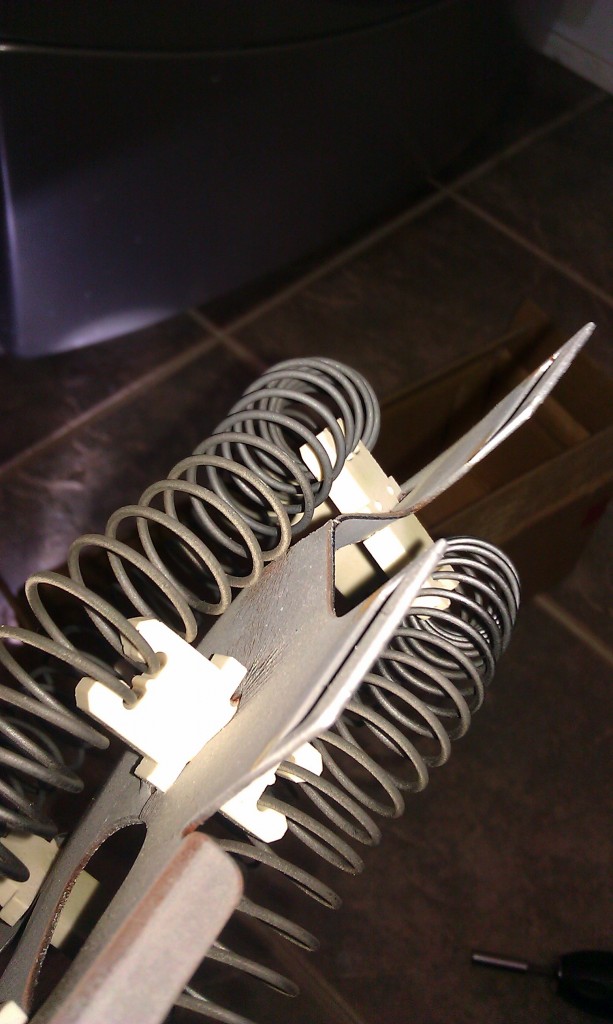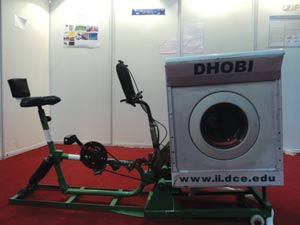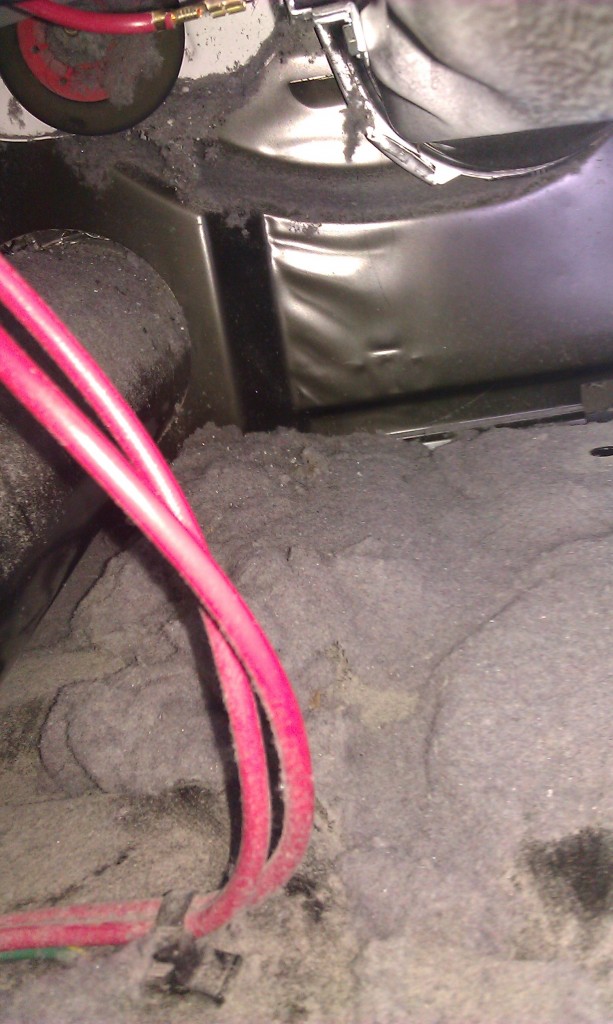-
Kitchen Aid Dishwasher Board Replacement
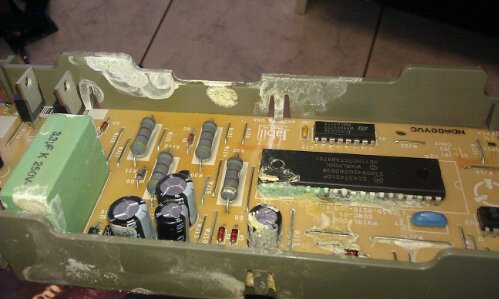
Sometimes its really not too hard to diagnose a problem.
-
Dryer Element Shorted to Ground
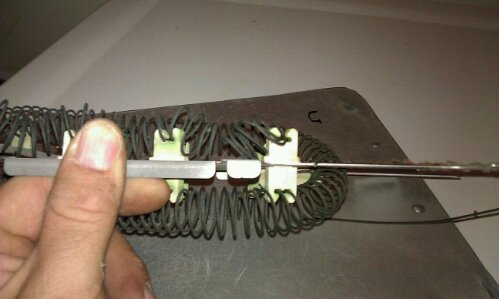
Here is another dryer element that shorted out to ground. This means that whenever the dryer was on, even on the air fluff cycle, the element was going full blast. This took out the safety cut-out fuse.
From now on, unless I see really bad venting issues on blown safety cut-out fuse jobs, I’m checking the element to make sure it is not grounded.
-
F20 On A Duet Washer

F20 is the code that the machine flashes up when it does not sense water entering. This can be a bad valve, or the water source turned off or even the flood stop hoses that some people use. In this case it was a poorly routed pressure switch hose. The hose was routed in a way that allowed it to rub against the back of the tub. It took 2 years but it finally rubbed a hole through the hose which meant that the pressure was being released and so the pressure switch kept calling for water.
A new hose routed properly and all is up and running again.

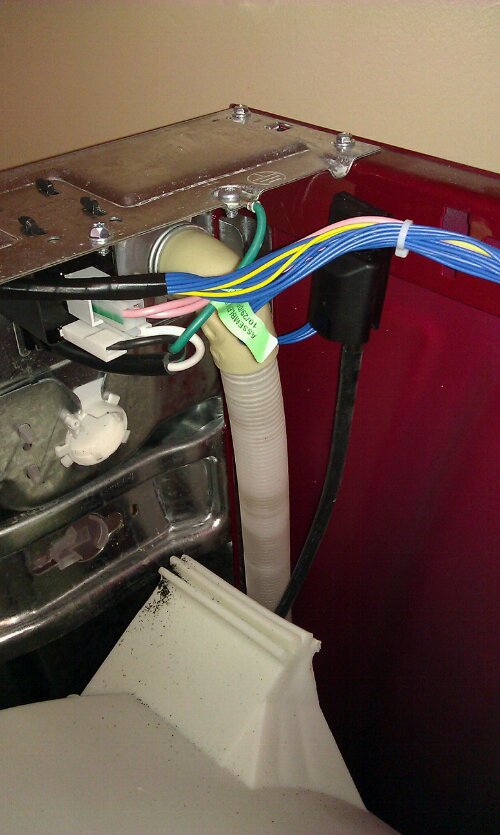
-
Burnt Out Control Board
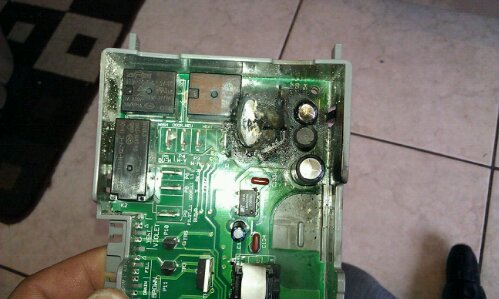
Sometimes when a control board blows …. it REALLY blows!
-
Replacing a Torn Door Boot on a Duet Washer
Some guys were wondering how to replace a door boot on a Whirlpool Duet washer without removing the front panel. This is how I do it.
Please excuse the background noise on the video – this was recorded with my cell phone ….
httpvh://www.youtube.com/watch?v=Lj5fvpBwBXM
-
Don’t Bypass Safety Devices
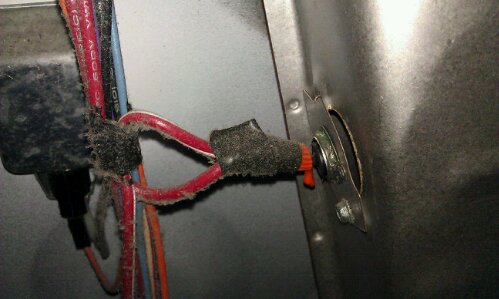
Bypassing safety devices like fuses and overheat thermostats is about the dumbest thing you could do to your appliance. Those devices are there for safety. If something were to go wrong, those devices will save your life!
This is another dryer with a grounded out heating element. It got hot enough to blow the high temp safety thermostat. Somebody (not sure who) decided to just bypass the thermostat and keep using the dryer. They are lucky they did not have a house fire with this one!
-
Warped Dryer Heating Element
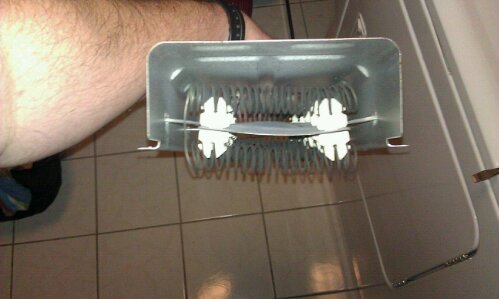
This was a unique problem. The complaint on this Whirlpool dryer was that the drum would not turn, but the heating element was on. Right away this is a hint as to where the problem was. The element should never be able to be on if the drum is not turning.
So I pulled the back off and removed the element. When I flipped it over it was easy to see what the problem was. The plate that holds the element has warped which was causing the element to ground out. This means that anytime the dryer is on, it will be on and would not cycle off.
Replaced the element and the open safety thermal fuse and all is well.
EDIT: Oct 24, 2011 Here is another one. See how the center support warped up enough to touch the element.
-
Human Powered Washing Machine
Invented by a second year computer-engineering Bhutanese student in New Delhi, India, the pedal powered washing machine called “dhobi”. “Dhobi” won 22-year-old Vishma Rai, the first prize for innovative Green Energy technologies for India 2011. The prize was that Green Energy would help mass produce and market the product. “But I wanted this to be a Bhutanese green product with a Bhutanese name before it’s mass produced,” Vishma said.
It took Vishma two months to get a no-objection certificate from his university to mass produce Dhobi. He has taken a semester off and is now planning to approach His Majesty and various agencies for support, both financial and administrative.
The idea to invent this product, which is under process for registration, was inspired from a cycle rickshaw. With a capacity is five kilograms, it took Vishma about seven months to make Dhobi.
“There was no washing machine in our boy’s hostel and we go to the gym to burn calories,” he said. “They say necessity is the mother of invention, and I thought of making something that would help us wash clothes and burn calories by pedaling.”
Neighbour’s Editorial: I’m not sure how handy this would be … Plus the caloric calculations in the original article seem to be wrong. It’s kinda big – but in the world of green energy and all things ‘eco’, I suppose it might have a spot to fill.
Read full article here.
-
Are Your Appliances Accessible for Service
One of the problems that I run into as a serviceman are appliances that have been ‘built-in.’ This is especially true of dishwashers that were installed before ceramic or hardwood floor was laid down. If the floor was not installed under the dishwasher, then it is virtually impossible to remove the dishwasher without either damaging the floor, damaging the dishwasher or lifting the countertop.
Other examples are cooktops that are siliconed or glued down. Hood fans or OTR microwaves that have been siliconed or grouted into place. Stackers installed into closets before the doors and door frames were installed. etc.
Pictured below is a regular Whrilpool washer that has been built-in with walls and a hard plumbed washtub. This unit appears to have a transmission problem, but until the customer has someone remove the washer from its current position, I cannot do anything further. Think about this when renovating or designing your home.
-
Blocked Venting on a Dryer
This is what the inside of a dryer with blocked venting looks like. Mounds (inches thick sometimes) of lint. A real potential fire hazard. At least twice a year you should check the air flow at your outside wall cap. Also make sure that there is not a lint buildup. This is especially true if you have a mesh cage over the wall cap to prevent animals from getting in. Those meshes are notorious for catching and building lint.

